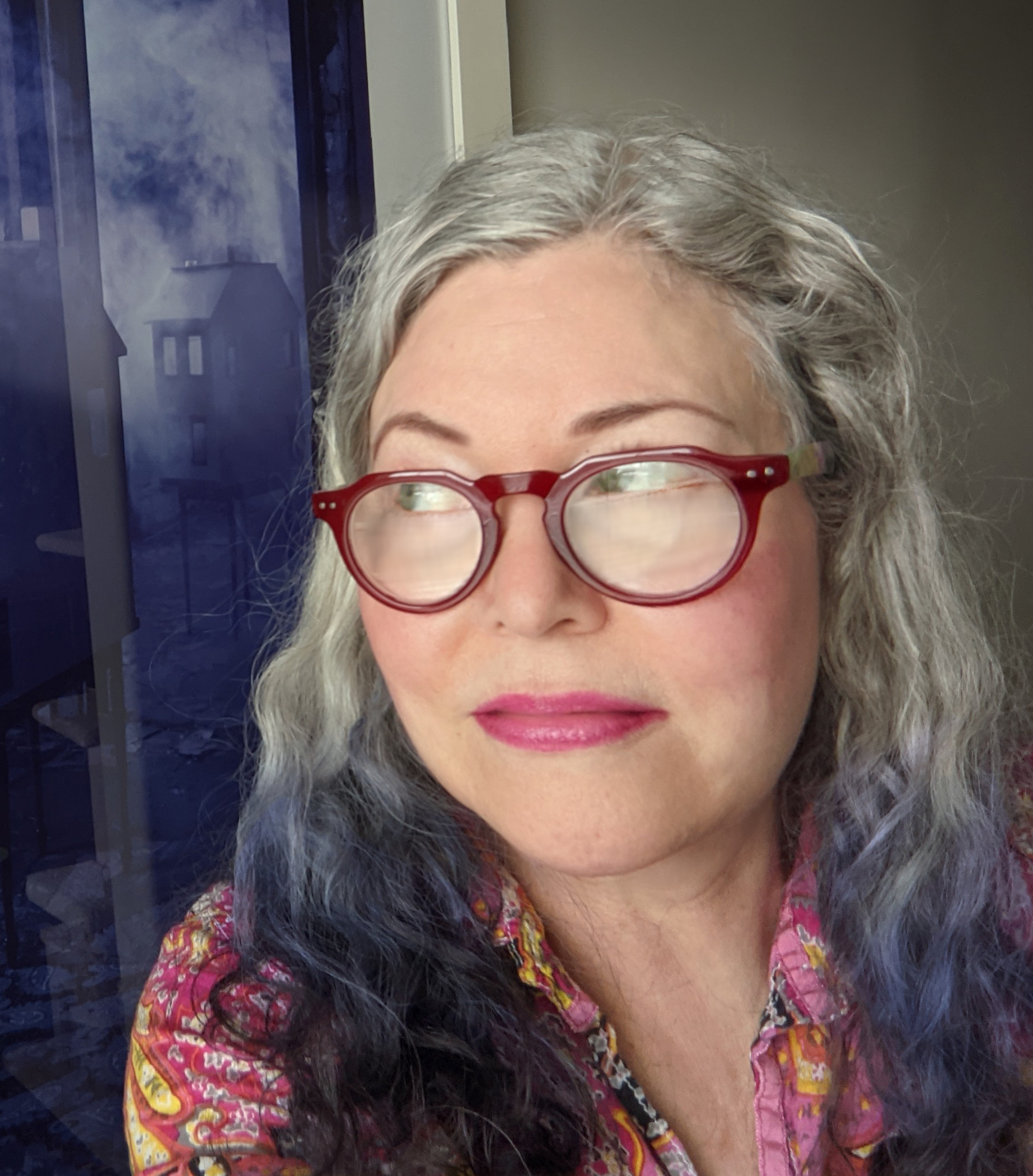School of Creative Arts

Associate Professor
Print Media
Visual Arts
Abbotsford campus, C1041
Phone: 604-504-7441 Ext. 4447
email DavidaMy print practice often entails the use of staged photographic imagery to investigate issues that involve the referencing and combining of various aspects of advertising and art history, contemporary and historical, towards a result of current social satire and commentary. The characters I create appear to be dredged up from the darker recesses of the subconscious. By splicing bits of fiction together, I encourage storytelling and the exercising of imagination in the viewer. The sleek compositing effects of the computer that I employ, where real and unreal are seamlessly blended, act as a metaphor for the complex ambiguities surrounding our choices, particularly in this new digital age, where new strains have been put on the human psyche.
“All the most powerful ideas in history go back to archetypes …the central concepts of religion, science, philosophy and ethics are no exception to this rule. These archetypes are “typical dispositions” of the unconscious, ways in which we are predisposed to organize the world around us”. Carl Jung
As we move forward in this new millennium, the technological pace of our existence needs to find a rhythm that is compatible with various aspects of the natural world. I structure images out of a desire to emphasize the notion that the creation of mythological images and stories still meet contemporary psychological needs. These unfold into intricate philosophical labyrinths that deal with the unearthing of hidden knowledge. An example is the inventors of the comic book heroes of DC comics, who spun the morality tales of the early to late 20th century by digging into the post-war fears of the human psyche. The prevalence of the contemporary Graphic Novel represents a continuance of this exercise of the imagination, which can deal with everything from current situations of angst to speculations within futurist philosophy.
Stories passed on orally, evolve over long periods and the details become altered by different storytellers, and changing contexts to suit different audiences and circumstances, including cultural and linguistic changes. The development of the imagination has its roots in the oral tradition of storytelling, where family secrets, folk medicine recipes, tales of superstition and morality are passed on, and embellished with time.
To imagine is to see beyond what is obviously apparent. The ability to imagine and envision sets the stage for creative problem-solving. With civilization moving in the direction of the virtual starting to hold validity in terms of experiential reality, we are beginning to spend serious time within internal mindscapes of our own creation. A new kind of storytelling is unfolding where one can even choose from alternate endings and paths of storyline development. Our literary and storytelling models are changing.
My approach to the teaching of Print Media is very liberal. The possibilities of combining print with performance, animation, digital imaging, sculpture and installation are encouraged in my classes when these applications seem appropriate for the best resolution of a student's work.
Artist Davida Kidd sets up her imagery like a stage with misappropriated props and no familiar script, writes fellow Canadian Artist Derek Besant.
"I first met Canadian artist, Davida Kidd, 24 years ago in 1986, during her first year as a Graduate student at the University of Alberta where I was teaching. Her imagery. even then, showed a gritty finesse and grandeur in how she depicted the figure - through photo-based collage in black-inked intaglio. Early works revealed partially nude figures, bound in one way or another, surrounded by fields of rich visual abstract textures akin to 18th century European religious paintings of torture or ecstasy. By contrast, her narrative was much closer to secular desires of physicality and the erotic undertow of Goya's Seven Deadly Sins portfolio of line etchings with aquatint.
Davida Kidd continues to produce complicated printed imagery, creating an intended sense of discord rather than harmony and incorporating photo-figurative material, often with hand-drawn elements. Themes of domination, guilt or implied aggression recur in female figures screaming at one another, a man holding a gun in his mouth, or in snakes circling a woman's head in a Medusa-like warning 'not to gaze any further'. But we do look and Kidd depends on our curiosity to get the better of us.
Kidd has lectured on intentionally odd archetypes that occupy her prints: from pre-pubescent girls formally served up in ballet tutus or school uniforms, tattoos gang members selling meat and guns at a Sunday Market; or an arm dripping paint into a sink, like a blood - letting ritual signifying the 'end of painting'. The domino effect of these images suggests an extremity of aesthetic content; but they are seductively orchestrated to be as disturbing as any newspaper headline. Kidd states that her interest lies between 'the fragility and ferocity of human behavior'. It is this polarity that gives her permission irreverently to dissect and reconstruct those same qualities in her work, but not necessarily at a safe distance". 1
1 Derek Besant RCA, "Dark Matter," Printmaking Today, Volume 19 NO 1, Spring (2010): 16-17.